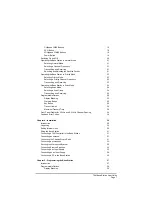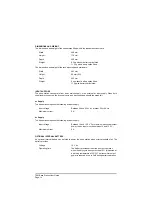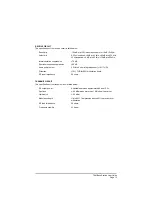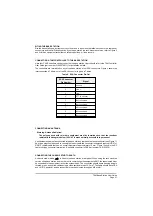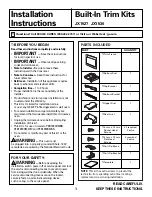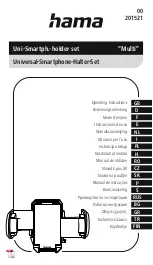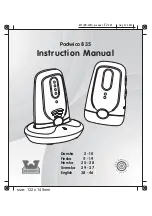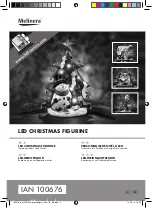
FRONT PANEL CONTROLS
Display
(Figure 3, Item 1). In Normal mode, the display shows the currently selected channel frequency. In
Priority mode, the display shows the channel frequency but alternates to show a ‘P’ every few seconds.
In Scan mode, and when the radio is scanning, the display shows Scn and the currently selected scan
group (a number between 1 and 15). When a busy channel is found, the channel's frequency is
displayed.
The display, in the event of a detected unserviceability, shows fault and error codes.
Transmit Indicator
(Figure 3, Item 2). A red indicator that lights when the transmitter is keyed and producing power.
Busy Indicator
(Figure 3, Item 3). A yellow indicator that lights when a signal, of sufficient strength to overcome the
squelch circuit, is received. This indicator is always lit when the squelch facility is switched off.
Power Indicator
(Figure 3, Item 4). A green indicator that lights when the radio is switched on by pressing the front panel
Power button. The front panel Power button cannot be operated unless the rear panel power switch is set
to on. Note that when the radio is switched off using the front panel Power switch, and the rear panel
switch remains at on, the internal battery (if fitted) continues to charge.
Microphone/Diagnostics Connector
(Figure 3, Item 5). A 7-pin DIN socket used to connect the fist microphone normally supplied with the
base station. This connector will also accept a microphone/headset; the connector's pin-out is shown on
page 32.
This socket is also used to connect the base station to a laptop, or PC, so that the base station's
personality can be programmed.
Volume Control
(Figure 3, Item 6). A rotary control used to adjust the volume of the internal loudspeaker. The control has
an integral switch: when the control is pushed in, the loudspeaker is switched on; when the control is
pulled out, the loudspeaker is switched off.
External Tx Inhibit Indicator
(Figure 3, Item 7). A red indicator that flashes when the external Tx inhibit facility is active. When active,
the transmitter cannot be keyed on any frequency.
External Tx Inhibit is set, if required, by physically connecting pin 14 on the rear panel Facilities
connector to earth (see ‘Connecting External Facilities’ in chapter 4).
Battery Indicator
(Figure 3, Item 8). This indicator is used only when the internal battery option is fitted. When the battery
is charging, the indicator is amber. When the battery is charged to approximately 75% of its maximum,
the indicator changes to green.
Loudspeaker Grille
(Figure 3, Item 9). The base station's internal loudspeaker is fitted behind this grille.
T6M Base Station User Guide
Page 18
Summary of Contents for T6M
Page 1: ...T6M Base Station User Guide Handbook Part Number 31 360T6MBS...
Page 12: ...Intentionally Blank T6M Base Station User Guide Page 12...
Page 16: ...Intentionally Blank T6M Base Station User Guide Page 16...
Page 48: ...Intentionally Blank T6M Base Station User Guide Page 48...
Page 56: ...Intentionally Blank T6M Base Station User Guide Page 56...
Page 58: ...Intentionally Blank T6M Base Station User Guide Page 58...
Page 59: ...BT6MBS 01 Front and Rear Layout Figure 1...
Page 60: ...BT6MBS 13 Rack Mounted Version Figure 2...
Page 62: ...BT6MBS 11 External Connection Diagram Figure 4...
Page 63: ...BT6MBS 10 Enclosure Securing Detail Figure 5...
Page 64: ...Base Station Block Diagram Figure 6 GA10547 Iss 3...
Page 65: ...Base Station Interconnection Diagram Figure 7 GA10548 Iss 3...
Page 66: ...Base Station Layout Diagram Figure 8 GA10719 Iss 1...
Page 69: ...Interface PCB Layout Diagram Figure 11 GA10751 Iss 1...
Page 70: ...BT6MBS 12 1 Cable Termination at the N Type Connector Figure 12...




